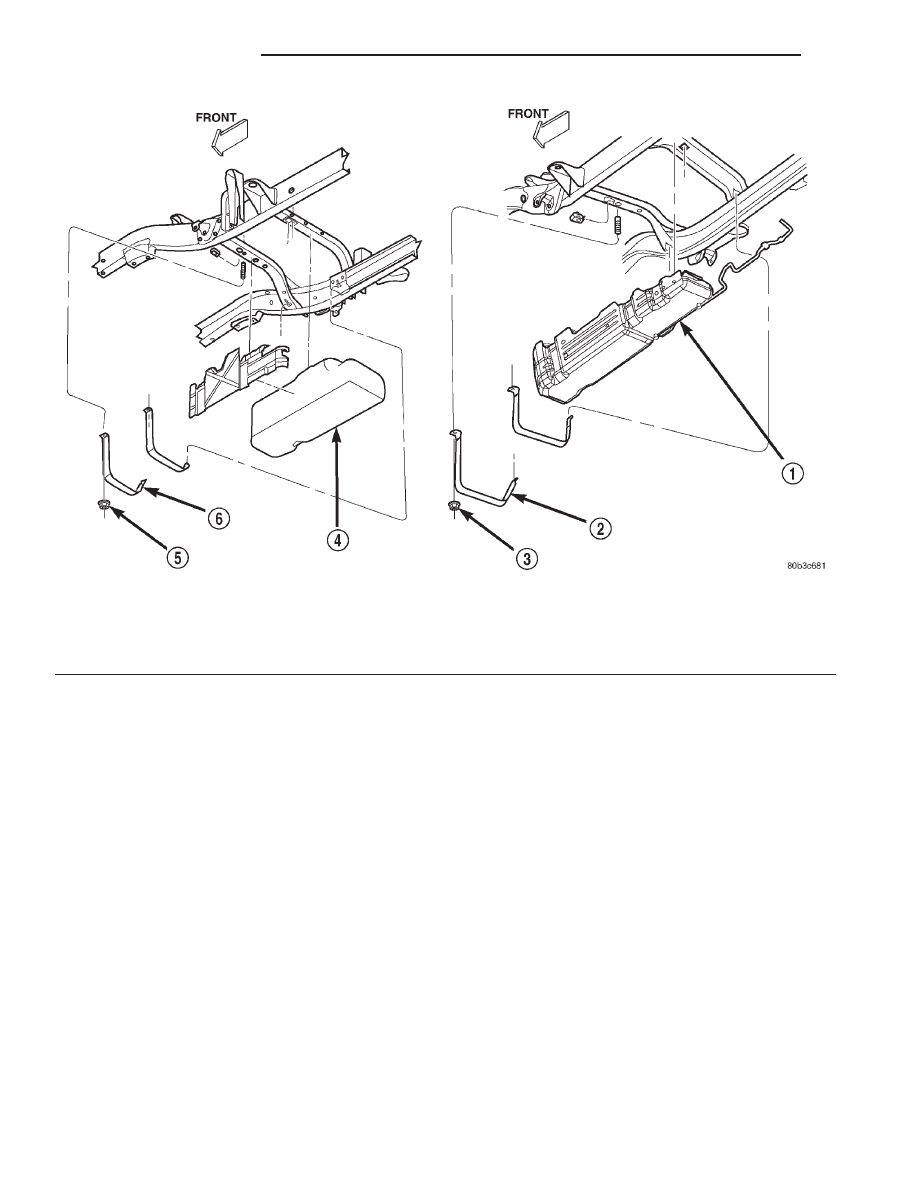Dodge Dakota (R1). Manual - part 562

(9) If equipped with a 2–piece driveshaft, the
crossmember located below the fuel tank must be
removed.
(a) Remove bolts/nuts securing driveshaft center
bearing carrier bracket to crossmember.
(b) Raise and support driveshaft and carrier
bracket assembly using a length of rope.
(c) Center punch all rivets.
(d) Drill out rivets with a 3/8” drill bit. Do not
use a larger bit, as holes in crossmember and vehi-
cle frame may become too large.
(e) Remove crossmember from vehicle.
(f) Remove remaining rivet material from cross-
member and vehicle frame.
(10) If equipped, remove fuel tank skid plate.
Refer to 23, Body
(11) Place and secure a transmission jack under
center of fuel tank and apply slight pressure.
(12) Remove two tank mounting nuts from mount-
ing straps (Fig. 30). Position tank mounting straps to
side of vehicle and lower tank just enough to allow
access to connections at top of tank.
(13) Clean quick-connect fittings of any dirt/con-
taminants before removal.
(14) Disconnect fuel supply line from fuel filter/
fuel pressure regulator fitting at top of tank. Refer to
Quick-Connect Fittings for procedures.
(15) Disconnect fuel vapor line(s) from rollover
valve(s) at top of tank.
(16) Disconnect electrical connector at pump mod-
ule at top of tank.
(17) Lower tank from vehicle. On certain models,
the tank must first be moved rearward, and then
down, for removal.
(18) Remove tank from hydraulic jack.
(19) If fuel pump module requires service, refer to
Fuel Pump Module Removal/Installation.
(20) If fill and vent hoses are to be removed from
tank, note their position on fuel tank fittings before
removal.
Fig. 30 Fuel Tank Mounting
1 - FUEL TANK (2—DOOR)
2 - STRAPS (2)
3 - NUTS (2)
4 - FUEL TANK (2—DOOR)
5 - NUTS (2)
6 - STRAPS (2)
14 - 20
FUEL DELIVERY
AN
FUEL TANK (Continued)